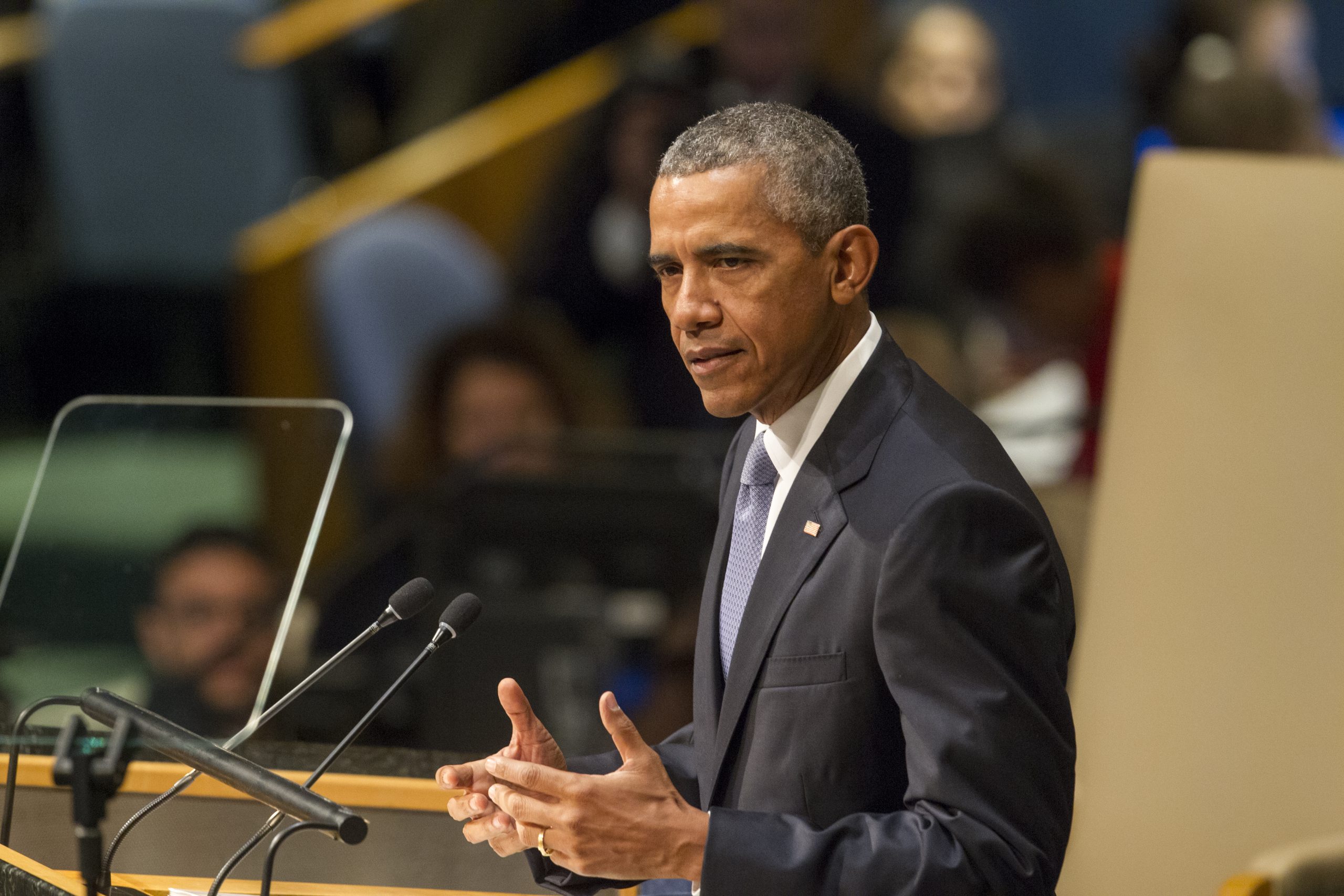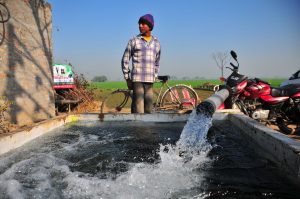With the very vocal attack on his policies from Congressional Republicans and the party’s presidential candidates, foreign leaders and climate negotiators want to know the answer to this very crucial question: will US President Obama’s policies and promises made in Paris hold up? At stake is the credibility of this administration, but also much more—the credibility of the world’s largest historical emitter of climate changing gases . This uncertainty could undermine the fragile trust that lies at the heart of any effort to bring the world’s nations together in Paris to solve this existential crisis.
The facts are these: President Obama’s term ends in 13 months, his party is in the minority in both chambers of Congress, and there are nine Republican candidates who seek to succeed him. These candidates range from climate denialists to those who believe acting on climate should not interfere in any way with economic growth.
In the short term, the hostile Congressional majority is more of a problem, as they introduce measures to halt implementation of his Clean Power Plan, to undercut budgets underpinning climate action across the government, and to stop payments on the US$3 billion Obama has promised to the UN-directed Green Climate Fund. So far, these efforts have largely been resisted by Congressional Democrats and some sympathetic Republicans, but this is an important battlefield to watch in the months ahead.
In the medium term, presidential elections last an eternity in the US, and the agonising primary system takes the fight around the country to a shifting mix of states. The most important thing about the primaries is that the most reliable voters in these contests are the more extreme voters in each party, making for a polarisation of positions. To emerge and win in a field of nine Republicans requires conservatives to take a hard public line against Obama’s positions—to appeal to the party’s “base.” Statements by Donald Trump and Ted Cruz are remarkable in their dismissal of the issue.
In the longer term, the presidential general election is very important. With Hillary Clinton as the likely nominee of the Democratic Party, her administration would likely continue Obama’s policy, as would her challenger, Senator Bernie Sanders.
For that reason, November 8 next year will be a crucial landmark for how strongly the US moves forward on climate. A few Republican candidates such as Jeb Bush, John Kasich and Chris Christy would merely tinker with Obama’s Clean Power Plan. A more conservative candidate would likely try to overturn it.
But there are important ways this rollback will not go as quickly as conservatives might like. First, even with a vicious majority in the House, the Senate has institutional rules that allow a small minority to slow or stop entirely efforts to roll back policies. A “filibuster” (a non-stop speech on the chamber’s floor) can be undertaken by just one senator, and can lock up the chamber for days. Similar efforts to undercut funding for environmental agencies and other parts of the government mobilized to confront climate change can take quite long to undertake. Spending bills take months and there is much back-room “horse-trading” that protects pet areas of different legislators. Vocal constituencies sometimes mobilise very strategically, as has happened before to protect climate adaptation funds and is beginning on Obama’s GCF pledge. Cuts are notoriously difficult to make.
Legal basis
Finally, rules in place to address climate change will be harder to overturn, as they are supported by court decisions and the requirements of previous legislation. One is EPA vs. Massachusetts, a landmark decision that required the federal government to treat carbon dioxide as a dangerous pollutant for human health. Another is the relatively new requirement that agency cost-benefit analyses about regulations take into account the “social cost of carbon,” which is the average impact of the burning of one ton of fossil fuels. This requirement will take a long time to overturn if a new administration were to try, and they would face long legal attacks from environmental non-governmental organisations and perhaps Attorneys General of more progressive states such as California and those in New England.
Obama’s strategy is important to understand. In his first term, he immediately stated his intention to act on climate change, but said that Congress should send him legislation. If Congress failed to ask, he said, he would do so himself. Congress never did, so in his second term he has moved ahead without them.
Obama’s domestic efforts on carbon emissions have been taken under the Clean Power Plan, which focuses on the emissions of power plants and has different targets for every state. States themselves get to decide their own approaches, and of course none of these are guaranteed to work. But overall, the Clean Power Plan is a credible policy for the US to reach its pledge of 26-28% emissions reductions by 2025. These reductions can be reached by maximising efforts already approved under the Clean Air Act, passed two decades ago. Some states are suing the federal government to avoid these restrictions, but so far it appears they are likely to stand, if for no other reason than the courts are hesitant to meddle in areas of regulation.
Why Obama’s polices will be durable
In my opinion, Obama’s climate policies are likely to endure, for several reasons. One is that public opinion on climate change is shifting strongly in the US, as people are perceiving for themselves that things are changing. Summers are hotter and longer, flooding is worse, droughts and wildfires are becoming more extreme. Another is Pope Francis’ strong statements in his encyclical Laudato si’ and in his speeches in the US and around the world on the moral case for acting on climate change. His visit to Congress changed the discussion, and weakened the ability of critics to dismiss the issue lightly. Cheaper renewables like wind and solar are making it clearer that acting on climate is not just a burden.
The White House has had a busy and very successful year in reaching out to other nations to make ambitious pledges in the Paris round of “Intended Nationally-Determined Contributions,” or INDCs. Most notable was the joint US-China announcement in November 2014 that broke the logjam for many other countries and showed how pledges could be at once fairly ambitious and “differentiated”—different for early and later developing nations. There have been similar announcements with Mexico and Brazil, and many meetings around the world, including with India, France, Germany and so on. The September 2015 second joint announcement with China showed how these two countries (who now make up about half of all emissions) have learned that they can have a bigger impact by acting together. These have been helpful contributions to building momentum for Paris, and the expectations of global warming have dropped from 3.6C to 2.7C if countries carry out these plans.
Red lines?
This is not to say that the negotiations in Paris will be easy ones for the US delegation. The team has repeated its demand for rigorous monitoring of all countries’ emissions, and has fought to avoid the thorny issue of “loss and damage” from climate disasters that cannot be adapted to in the poorest nations. Because of the odd Senate rules, the Obama administration cannot agree to anything in Paris that is legally binding. Rather, they are forced to ask for something entirely voluntary. They can, however, support mechanisms for monitoring and evaluation of national efforts, and for future reviews that lead to greater ambition (what are called ‘ratchet mechanisms’).
Together, these issues leave much for the Obama Administration to fight for. While not perfect and in many ways still not ambitious enough, Obama 2.0 (in his second term) has shown himself far more dedicated to the issue of climate change, and the latest survey research suggests that he has the support of a majority of the American people, who are growing very worried about this problem. Positive news from Paris will be a boost for the durability of his actions and promises.








